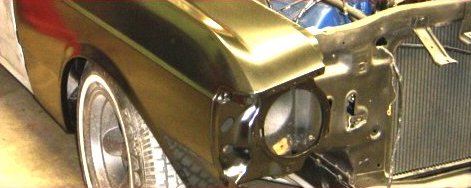FAQ
When should I change the engine oil in my classic car?
Its always good practice to change engine oil and filter at least every three months regardless of miles travelled. An engine that sits for long periods and then idles around town is prone to damage from impurities and acids formed in the oil pan. The engine never gets a chance to heat balance hence never boils off the nasties.
My classic car has started to run hotter than normal. The temp gauge reads higher than it normally does and gets worse on the highway.
A couple of things may be happening. A quick diagnostic test is to check top hose and bottom hose temps. If the top hose feels hotter than the bottom radiator hose the radiator is probably starting to get blocked internally with scale. Temp difference between top and bottom hoses is typically about 20 deg C. This feels about the same or slightly cooler. A definate temp difference or a cold lower hose means no coolant circulation. After checking water pump, thermostat, belts, fan operation and coolant level, pull the radiator out and have it cleaned out by a radiator shop. Make sure they pull the tanks off and physically clean out the cores. Prior to refitting, flush out engine block replace thermostat. Early V8'S should have a 160F/71degC thermostat fitted (in hotter climate). Dose up with a good ethylene glycol corrosion inhibitor. Also try to run a radiator sock in the top hose to catch any scale. As these old girls become weekenders and are used infrequently you may need to pull the radiator every twelve months or so to keep scale to a minimum.
PS. always check a new thermostat prior to installation by cooking it up in boiling water and checking opening temp. They normally crack open right on the temp stated. It takes about another 10deg C to fully open.
FAQ

